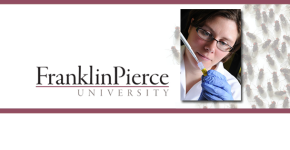
Some of the tiniest eyes in the world might hold insight into restoring human vision.
Susan Arruda explains how taking a closer look at some of the tiniest eyes in the world can help us better understand how to restore failing eyesight in humans. Arruda, Associate Professor of Biology at Franklin Pierce University in Rindge, New Hampshire, is engaged in research that involves examining the eyes of fruit flies to study their photoreceptors.
Susan Arruda is Assistant Professor of Biology/Integrated Science at Franklin Pierce University in Rindge, N.H. She holds a Ph.D. from Dartmouth College and a B.A. from the College of the Holy Cross.
Flies & Eyes
![]()
Those pesky little fruit flies that seem to appear out of nowhere are actually an important genetic model organism!
In 1904, Thomas Hunt Morgan set up a “Fly Room” at Columbia University to study inheritance in Drosophila melanogaster, the scientific name for the common fruit fly.
Intrigued by a mutant white-eyed fly isolated in his laboratory, he and his students performed ground-breaking research that showed that the white-eye mutation was carried on a particular chromosome.
In 1933, Hunt Morgan won the Nobel Prize in Medicine for “his discoveries concerning the role played by chromosomes in heredity.” Since histime, Drosophila have been used by researchers world wide to understand a variety of different biological processes.
Today, my students and I use Drosophila to understand vision and human retinal degenerative diseases, such as Macular Degeneration and Retinitis Pigmentosa.
You might be wondering what the eyes of a fruit fly can tell us about these diseases? It turns out A LOT.
Though fruit flies’ tiny eyes are compound eyes–made up of many small eyes–the tiny creatures possess many biological similarities to humans, as they relate to vision.
Since some of the proteins involved in fruit fly vision are very similar to those used in the human visual signaling cascade, anything we learn about vision in Drosophila can thus be applied to our knowledge of human vision.
Moreover, the cell death that occurs in these retinal diseases can be mimicked using certain mutant Drosophila stocks providing a disease model that is inexpensive, easy to maintain and, due to the short gestation period of the organism, very fast!.
So, even though you might be annoyed by those little bugs hovering around your bananas, remember the important contributions the Drosophila melanogaster has made to science and medicine!
Read More: Susan Arruda leads students in Biomedical Research

Comments
One response to “Susan Arruda, Franklin Pierce University – Eyes & Flies”